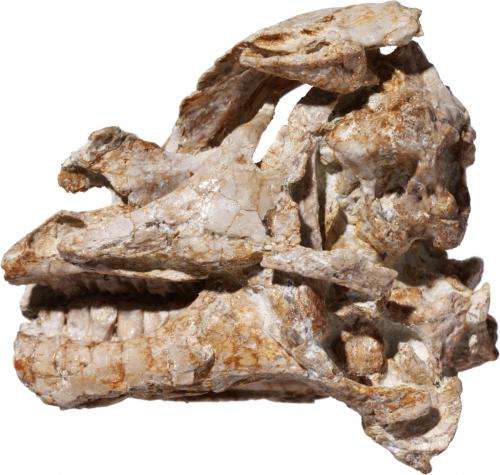Fossil brain teaser: New study reveals patterns of dinosaur brain development

A new study conducted at the University of Bristol and published online today in the Journal of Evolutionary Biology sheds light on how the brain and inner ear developed in dinosaurs.
Stephan Lautenschlager from Bristol's School of Earth Sciences, together with Tom Hübner from the Niedersächsische Landesmuseum in Hannover, Germany, picked the brains of 150 million year old dinosaurs.
The two palaeontologists studied different fossils of the Jurassic dinosaur Dysalotosaurus lettowvorbecki: a very young (juvenile) individual of approximately three years of age and a fully grown specimen of more than 12 years of age.
Stephan Lautenschlager, lead author of the paper, said: "The two different growth stages of Dysalotosaurus provided a unique opportunity to study their brain, and how it developed during the growth of the animal."
Using high-resolution CT scanning and 3D computer imaging, it was possible to reconstruct and visualise the brain and inner ear of Dysalotosaurus lettowvorbecki – a small, plant-eating dinosaur, which lived 150 million years ago, in what is now Tanzania.
Co-author Tom Hübner said: "Well-preserved fossil material, which can be used to reconstruct the brain anatomy is usually rare. Thus, we were fortunate to have different growth stages available for our study."

By looking at the brain and inner ear anatomy, the two researchers found that the brain of Dysalotosaurus underwent considerable changes during growth – most likely as a response to environmental and metabolic requirements. However, important parts responsible for the sense of hearing and cognitive processes were already well developed in the young individual.
Stephan Lautenschlager said: "Our study shows that the brain was already well-developed in the young dinosaurs and adapted perfectly to interact with their environment and other individuals."
This study has important ramifications for the understanding of how parts of the brain developed in dinosaurs. However, further research into that field is necessary to investigate if the pattern of brain development in individual dinosaurs is also reflected in a large scale trend during the more than 150 million years of dinosaur evolution.
The study by Stephan Lautenschlager (Bristol) and Tom Hübner (Hannover) is published today in the Journal of Evolutionary Biology.
More information: 'Ontogenetic trajectories in the ornithischian endocranium' by Stephan Lautenschlager and Tom Hübner in the Journal of Evolutionary Biology
Journal information: Journal of Evolutionary Biology
Provided by University of Bristol

















